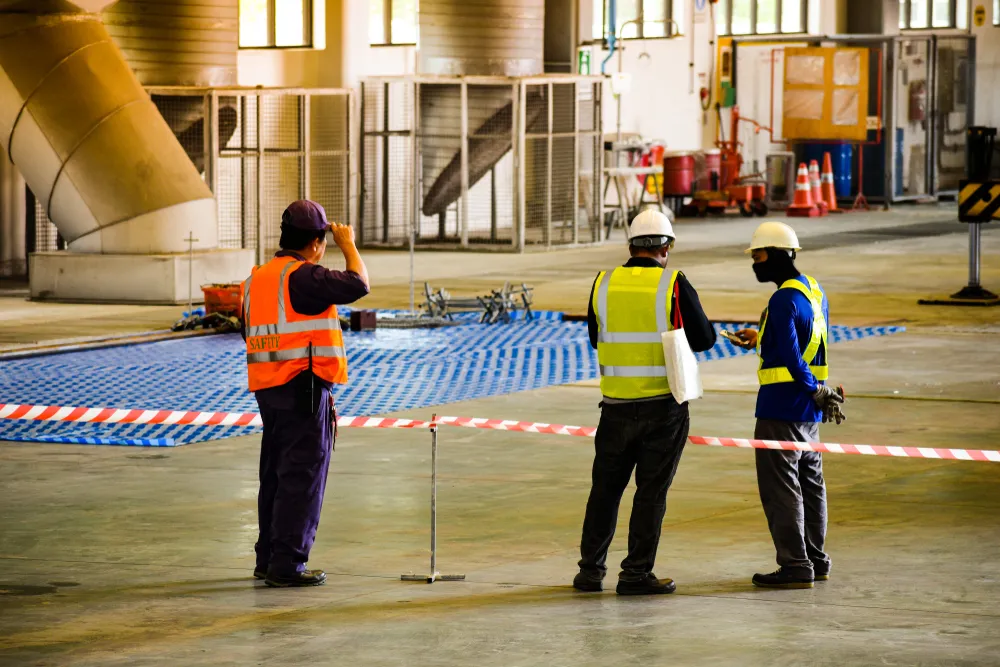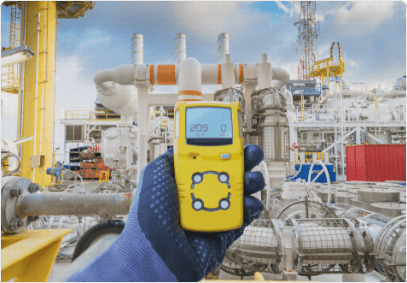Examine This Report on Roar Solutions
Examine This Report on Roar Solutions
Blog Article
The Best Guide To Roar Solutions
Table of ContentsHow Roar Solutions can Save You Time, Stress, and Money.7 Easy Facts About Roar Solutions ExplainedGetting My Roar Solutions To Work
In order to secure installments from a prospective surge a method of evaluating and classifying a possibly dangerous area is required. The objective of this is to make sure the appropriate option and installment of tools to ultimately stop a surge and to guarantee safety of life.
(https://www.video-bookmark.com/bookmark/6634779/roar-solutions/)
No tools must be mounted where the surface area temperature level of the tools is higher than the ignition temperature of the offered threat. Below are some usual dirt unsafe and their minimum ignition temperature level. Coal Dirt 380C 225C Polythene 420C (melts) Methyl Cellulose 420C 320C Starch 460C 435C Flour 490C 340C Sugar 490C 460C Grain Dirt 510C 300C Phenolic Resin 530C > 450C Aluminium 590C > 450C PVC 700C > 450C Residue 810C 570C The probability of the danger being existing in a concentration high adequate to trigger an ignition will differ from area to area.
In order to identify this threat a setup is split into areas of risk relying on the quantity of time the dangerous exists. These locations are described as Areas. For gases and vapours and dusts and fibers there are 3 areas. Area 0 Area 20 A dangerous environment is extremely likely to be existing and may be present for extended periods of time (> 1000 hours each year) and even continuously Area 1 Zone 21 A hazardous ambience is feasible yet unlikely to be existing for lengthy durations of time (> 10 450 C [842 F] A classification of T6 implies the minimum ignition temperature is > 85 C [185 F] Harmful area electric tools possibly designed for use in higher ambient temperature levels. This would indicated on the rating plate e.g. EExe II C T3 Ta + 60C( This means at 60C ambient T3 will certainly not be exceeded) T1 T1, T2, T3, T4, T5, T6 T2 T2, T3, T4, T5, T6 T3 T3, T4, T5, T6 T4 T4, T5, T6 T5 T5, T6 T6 T6 A T Course rating of T1 implies the optimum surface area temperature produced by the tool at 40 C is 450 C. Assuming the associated T Class and Temperature ranking for the tools are ideal for the area, you can always make use of an instrument with an extra strict Department ranking than needed for the location. There isn't a clear response to this concern however. It truly does depend upon the kind of equipment and what repair work need to be executed. Tools with certain test procedures that can not be done in the area in order to achieve/maintain third celebration ranking. Should return to the factory if it is prior to the devices's service. Area Fixing By Authorised Worker: Complicated screening may not be required nonetheless particular procedures might require to be followed in order for the equipment to maintain its 3rd event rating. Authorised employees have to be utilized to do the work appropriately Repair work have to be a like for like substitute. New component need to be thought about as a straight substitute needing no special testing of the tools after the fixing is complete. Each tool with a harmful rating ought to be assessed separately. These are laid out at a high level below, but for even more detailed info, please refer straight to the standards.
How Roar Solutions can Save You Time, Stress, and Money.
The tools register is an extensive data source of devices records that consists of a minimum set of areas to identify each thing's place, technical specifications, Ex lover category, age, and environmental information. This info is vital for monitoring and managing the tools efficiently within hazardous locations. On the other hand, for periodic or RBI sampling assessments, the grade will be a combination of Detailed and Close assessments. The ratio of Comprehensive to Close examinations will be established by the Equipment Risk, which is examined based upon ignition risk (the probability of a resource of ignition versus the chance of a flammable atmosphere )and the unsafe location classification
( Zone 0, 1, or 2). This variation will likewise affect the resourcing demands helpful resources for work preparation. Once Lots are defined, you can create sampling plans based on the example size of each Whole lot, which describes the number of arbitrary tools items to be examined. To determine the called for sample dimension, two facets require to be examined: the dimension of the Whole lot and the group of assessment, which suggests the level of initiative that should be used( reduced, typical, or increased )to the examination of the Great deal. By combining the group of assessment with the Whole lot dimension, you can after that develop the ideal being rejected standards for an example, suggesting the permitted number of damaged things found within that example. For more details on this procedure, please refer to the Energy Institute Standards. The IEC 60079 standard suggests that the maximum interval between assessments must not surpass three years. EEHA assessments will also be performed outside of RBI projects as component of scheduled upkeep and tools overhauls or repairs. These inspections can be credited toward the RBI example sizes within the impacted Lots. EEHA evaluations are performed to identify mistakes in electric equipment. A weighted racking up system is essential, as a solitary item of devices may have multiple faults, each with differing degrees of ignition danger. If the combined rating of both examinations is less than two times the fault rating, the Lot is regarded appropriate. If the Whole lot is still taken into consideration undesirable, it should undertake a complete inspection or justification, which might trigger more stringent evaluation methods. Accepted Whole lot: The reasons for any type of faults are determined. If a common failure mode is found, additional devices may need assessment and repair service. Mistakes are identified by extent( Security, Honesty, Housekeeping ), ensuring that urgent issues are assessed and addressed immediately to reduce any kind of influence on safety or operations. The EEHA data source need to track and tape the lifecycle of faults together with the restorative activities taken. Applying a robust Risk-Based Examination( RBI )technique is vital for making sure compliance and safety and security in handling Electrical Devices in Hazardous Areas( EEHA) (hazardous area electrical course). Automated Mistake Rating and Lifecycle Monitoring: Effortlessly handle faults and track their lifecycle to improve assessment precision. The introduction of this assistance for risk-based evaluation further enhances Inspectivity's setting as a best-in-class solution for governing compliance, as well as for any asset-centric assessment use instance. If you are interested in finding out extra, we welcome you to request a demo and find just how our solution can transform your EEHA management processes.
Examine This Report on Roar Solutions

In regards to explosive threat, a harmful location is an environment in which an eruptive atmosphere is present (or might be expected to be existing) in amounts that call for special precautions for the building and construction, installation and use equipment. hazardous area electrical course. In this article we check out the challenges dealt with in the office, the threat control actions, and the needed proficiencies to work securely
It is a repercussion of modern life that we produce, store or deal with a variety of gases or liquids that are considered combustible, and a series of dirts that are regarded combustible. These substances can, in particular conditions, create explosive atmospheres and these can have significant and terrible repercussions. The majority of us know with the fire triangle get rid of any kind of one of the three aspects and the fire can not take place, yet what does this mean in the context of harmful areas? When damaging this down right into its simplest terms it is essentially: a combination of a certain quantity of launch or leak of a certain substance or product, blending with ambient oxygen, and the presence of a source of ignition.
In most circumstances, we can do little about the levels of oxygen airborne, however we can have significant influence on sources of ignition, for instance electrical tools. Dangerous locations are recorded on the hazardous area category drawing and are determined on-site by the triangular "EX LOVER" sign. Right here, amongst various other essential info, zones are split right into 3 types depending on the threat, the chance and period that an explosive ambience will exist; Zone 0 or 20 is considered the most unsafe and Zone 2 or 22 is regarded the least.
Report this page